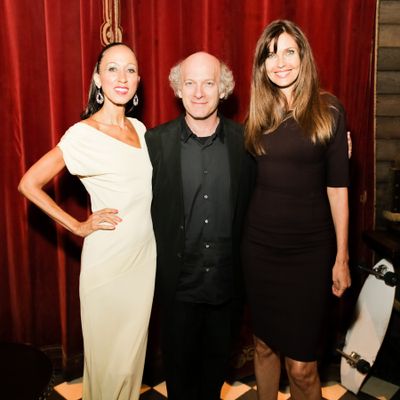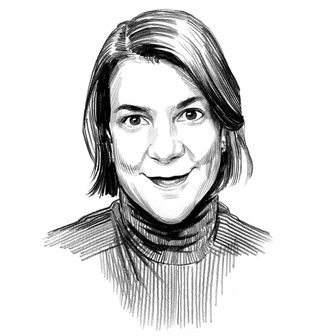
For an industry that’s always blathering about the importance of change, the fashion world sure loves itself some good old-fashioned nostalgia. Maybe it’s the romantic notion of decaying beauty, or that people feel superior when they reference how much better things used to be. But no matter how much we glorify the supermodels of yesteryear and lament the thin, sullen teenagers we see on the runways today, one thing’s for sure: The modeling industry has never been a kind one. In Timothy Greenfield-Sanders’s HBO documentary, About Face: The Supermodels, Then and Now, which aired last night, Carol Alt recalled being told she had to lose fifteen pounds if she wanted to work in the Paris shows. She got by on “a carrot here, an apple there,” and was so thin and pale when she got back home to Long Island that her own mother didn’t recognize her at the airport.
Alt, now 51, joined Pat Cleveland and Greenfield-Sanders at a private screening for the documentary at the Gramercy Park Hotel’s Rose Bar last night, which certainly wasn’t all gloomy stories of drugs, starvation, and mean editors. The film contains gorgeous footage of models dancing and twirling down the runways, reveling in the cameras and attention — a far cry from the robotic stomp we see at fashion shows now. Today, that kind of catwalk behavior might be regarded as distracting from the clothes, but Cleveland believes it’s the other way around. “What you try to do is let people appreciate what you’re wearing by being alive in it,” she recalled.
Featuring interviews with fashion luminaries like Cheryl Tiegs, Bethann Hardison, China Machado, and other famous faces, the documentary paints a fascinating portrait of a bygone era where fashion played looser, crazier, and a bit slower. Drug use was common, racism was overt, and the internet hadn’t been invented yet. Former Vogue editor Jade Hobson remembered seeing track marks on model Gia Carangi’s arms during a shoot and not doing anything about it (Carangi died of AIDS in 1986).
Still, those days sounded fun and glamorous. Jerry Hall told the story of her discovery, which took place when her mom helped her buy a ticket to the French Riviera, because they’d “heard that was the place to be.” She bought a pink metallic bikini, teased her hair into a curly blond Afro, put on platform heels, and strutted up and down the beach. “Within an hour, some guy came up to me and asked, ‘Would you like to be a model?’ And I said, ‘Yes!’” she said, bursting into a big, Texan laugh. “I was looking to be discovered.”
So why does the modeling industry seem so different now? When did tastes shift away from these larger-than-life muses and towards these disposable, nameless girls whose careers end after just a few seasons? Cleveland, whose daughter Anna von Ravenstein models today, said that the pendulum swung in the 1980s when more and more ready-to-wear lines started showing. “It was more economical to get one star for a show, someone like Carol [Alt], and then fill out the rest of the spots with less expensive girls,” she explained. “It was also about timing, and the booking of hotels, and the travel — from a business standpoint, [designers and agents] just couldn’t book a star lineup in every show.”
Reminisced Greenfield-Sanders, “When fashion was more of a mom-and-pop industry, the models were muses for the designers, and they all were family. And now it’s a conglomerate, and it’s corporate.” He recalled China Machado saying that she’d have hours to get used to her runway looks before fashion shows. “They’d get comfortable, and learn how to move in the clothes,” he explained. “Today, models get to the show, they get dressed at the last minute, and they have no relationship to the clothes whatsoever. I feel that’s very, very significant.”
Carol Alt doesn’t even think she would have made it in today’s industry. “Truthfully, I don’t even know what it takes for a model to succeed today. They don’t use models on covers anymore, or in many editorials or advertisements — that’s all mostly celebrity names and faces.”
Added Cleveland, “It’s gone full-circle, really, because that’s exactly how the fashion industry started, with society ladies and movie stars. So you’re going to see this pattern coming back around. Models will be back.”
Greenfield-Sanders agreed. “You need models, because they make the clothes look good. Movie stars don’t necessarily fit the clothes, and they certainly don’t know how to pose. These women know how to pose.”





